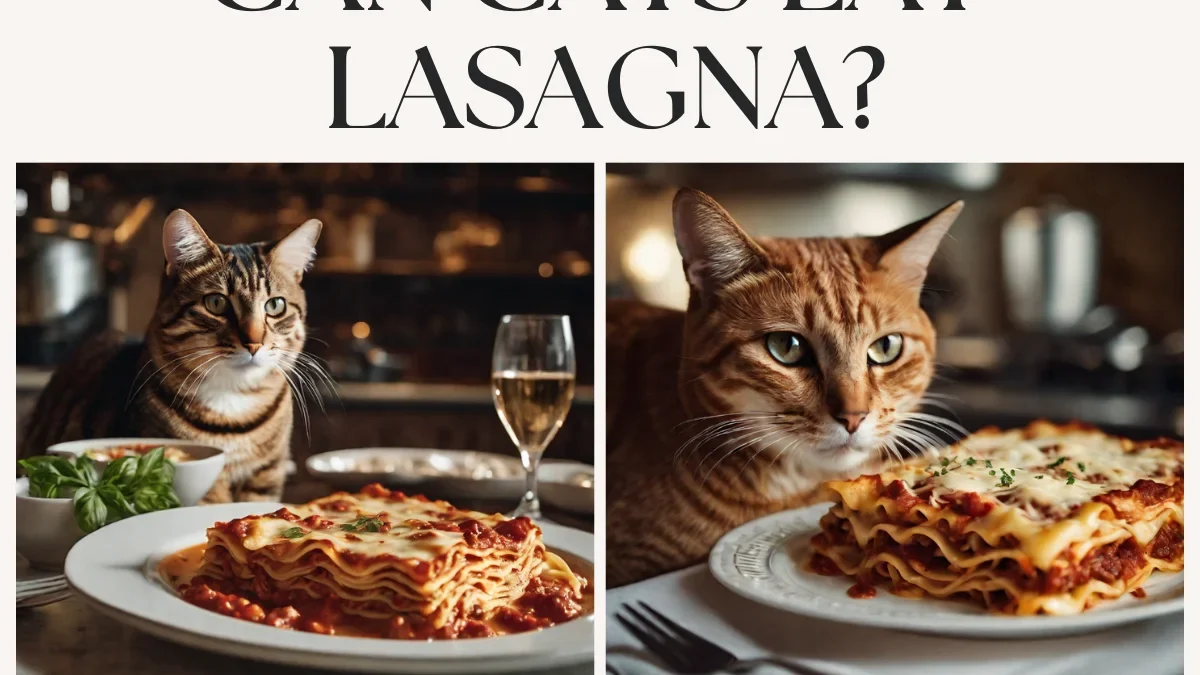If you’re a cat owner or just a lover of felines, you may have wondered at some point: can cats eat lasagna? After all, this iconic Italian dish is a favorite among many humans, but can it also be enjoyed by our furry companions? Some say yes, while others insist that it’s not safe for cats to consume. With so much conflicting information out there, it’s time to settle this debate once and for all. So, let’s dive into the topic and find out the truth about whether or not a cat can eat lasagna.
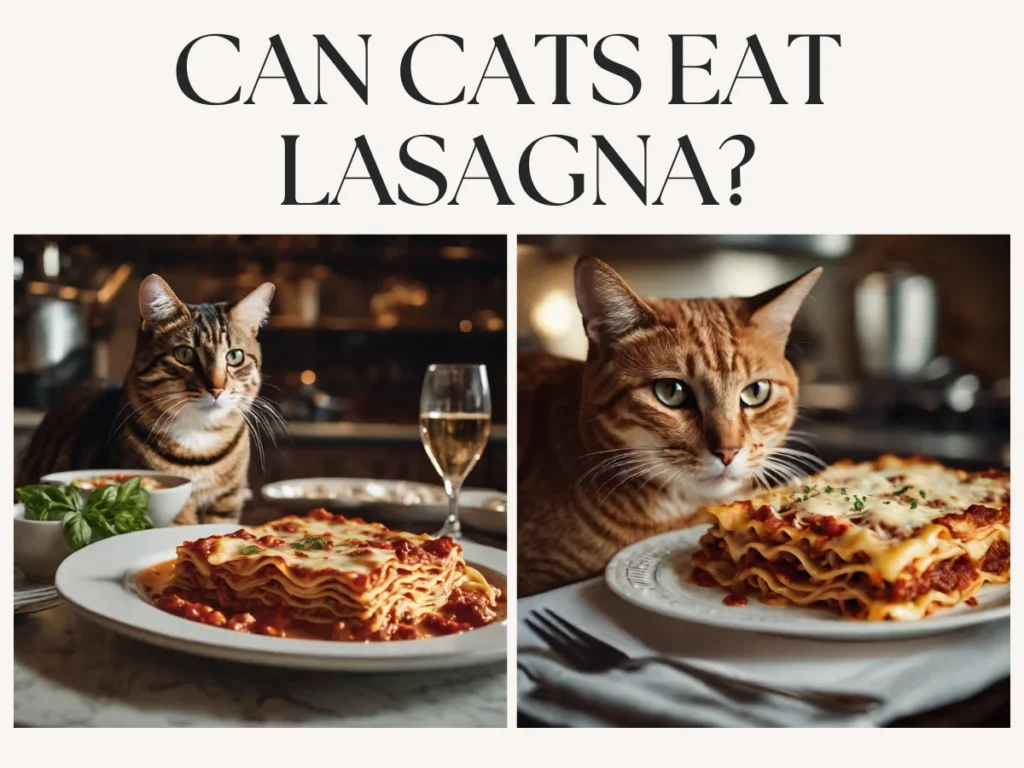
Table of Contents
Unveiling the Pop Culture Misconception: Garfield and Lasagna
It’s hard to think of lasagna without picturing the most famous lasagna-loving feline of all time: Garfield. For decades, this orange tabby has captivated audiences with his insatiable appetite for this mouthwatering Italian dish. But how much truth is there to this pop culture portrayal? Can cats really eat lasagna like Garfield does?
The short answer is no. While Garfield may have popularized the idea of cats devouring platefuls of lasagna, the reality is that it’s not a suitable food for our furry friends. Lasagna is typically made with ingredients that can be harmful or even toxic to cats. For instance, onions and garlic, commonly found in lasagna recipes, can cause damage to a cat’s red blood cells, leading to a condition called hemolytic anemia. This can be life-threatening for our beloved pets.
Not only that but lasagna is often loaded with rich, fatty ingredients like cheese and meat. Cats have different nutritional needs than humans, and a diet high in fat can lead to weight gain, obesity, and even pancreatitis. Additionally, the high salt content in lasagna can be harmful to cats, as it can disrupt their electrolyte balance and lead to health issues such as kidney problems.
While Garfield may make eating lasagna look fun and tasty, it’s important to remember that he’s just a cartoon character. Real cats should not be fed this dish, no matter how much they may beg or look longingly at your plate. It’s always best to stick to a balanced and species-appropriate diet for your furry friend.
In the next section, we’ll take a closer look at the specific ingredients in lasagna and how they can affect cats. By understanding the potential dangers, we can ensure that our feline companions stay safe and healthy. So, let’s dive into the world of lasagna ingredients and their effects on cats.
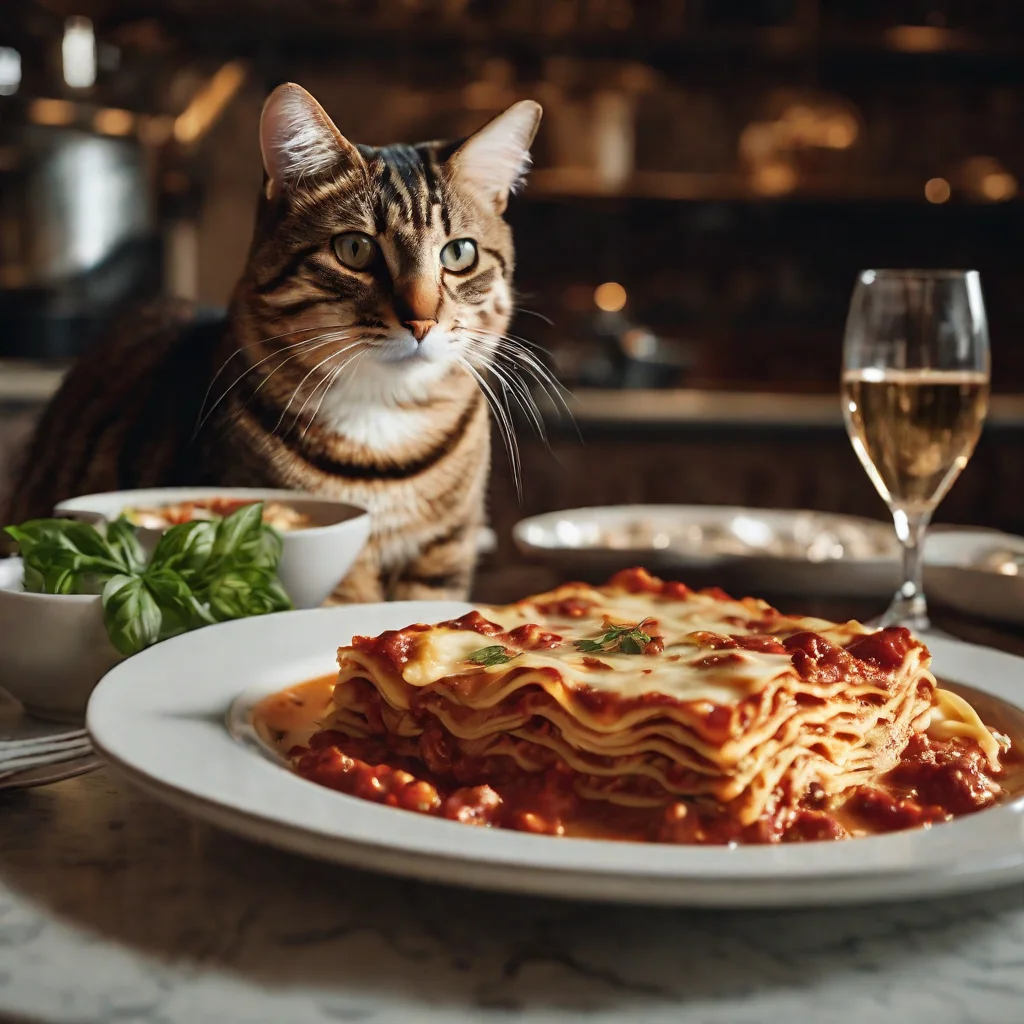
A Close Look at Lasagna Ingredients and their Effects on Cats
Lasagna, with its layers of pasta, cheese, and rich tomato sauce, maybe a beloved dish for humans, but it’s important to understand why it is not suitable for our feline friends. Let’s take a closer look at some of the key ingredients found in lasagna and their effects on cats.
Firstly, onions and garlic are commonly used in lasagna recipes for their flavorful taste. However, both onions and garlic are toxic to cats. They contain compounds that can cause damage to a cat’s red blood cells, leading to a condition called hemolytic anemia. This can be extremely dangerous and even fatal for cats.
Another ingredient to watch out for is cheese. While many cats enjoy the taste of cheese, it is not an ideal food for them. Cats are lactose intolerant, meaning they lack the enzyme needed to properly digest lactose, the sugar found in milk and dairy products. Feeding your cat cheese can result in gastrointestinal upset, such as diarrhea or vomiting.
Additionally, the high-fat content in lasagna can be problematic for cats. Cats have different nutritional needs than humans, and a diet high in fat can lead to weight gain, obesity, and even pancreatitis. Pancreatitis is a painful inflammation of the pancreas and can be life-threatening for cats if not treated promptly.
Lastly, the high salt content in lasagna can also pose a health risk to cats. Cats are naturally prone to kidney problems, and a high-salt diet can exacerbate these issues. Excess salt intake can lead to increased thirst, dehydration, and potential kidney damage.
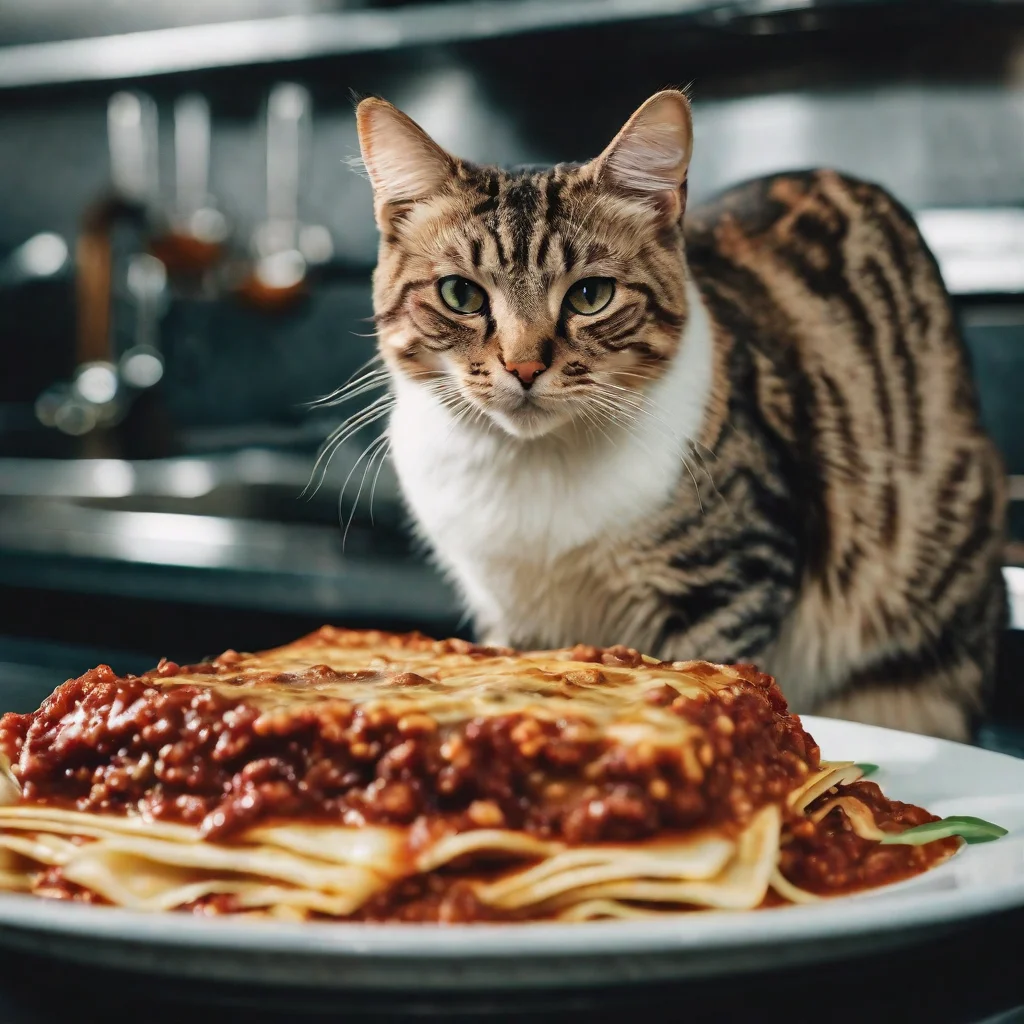
Personal Testimonials: Real-life Accounts of Cats Eating Lasagna
If you’re still skeptical about whether or not cats can really eat lasagna, let’s hear from some real-life cat owners who have experienced their furry friends indulging in this dish. These personal testimonials shed light on the realities of cats and lasagna, and might just change your perspective.
First up is Sarah, a cat owner from California. She admits that she made the mistake of giving her cat a small piece of lasagna one evening. At first, her cat seemed excited and devoured the food with enthusiasm. However, a few hours later, Sarah noticed that her cat was vomiting and had diarrhea. Concerned, she rushed her cat to the vet, who confirmed that the rich ingredients in the lasagna had caused gastrointestinal upset. Sarah learned her lesson and vowed to never give her cat lasagna again.
Next, we have Mark, who has multiple cats and often shares his meals with them. One day, he decided to let his cats have a taste of his lasagna. While some of his cats showed no negative reactions, one of them developed lethargy and seemed uninterested in food for a couple of days. Worried, Mark took his cat to the vet, who diagnosed her with pancreatitis. The vet explained that the high-fat content in the lasagna had triggered the inflammation in her pancreas. Mark regrets his decision and urges other cat owners to avoid sharing human food, especially lasagna, with their feline friends.
Lastly, let’s hear from Jennifer, a cat lover from New York. Jennifer’s cat, Max, has a mischievous streak and often sneaks food off the kitchen counter. One day, while Jennifer was cooking lasagna, she turned her back for just a moment, and when she looked again, Max had already taken a big bite out of her plate. Surprisingly, Max showed no ill effects after consuming the lasagna. Jennifer, however, did not want to take any chances and called her vet for advice. The vet reassured her that not all cats will have negative reactions, but it’s still best to avoid feeding them lasagna due to the potential dangers.
These personal testimonials highlight the risks associated with feeding cats lasagna. While some cats may not experience any immediate problems, others can suffer from serious health issues. It’s important to remember that every cat is different, and just because one cat tolerates lasagna doesn’t mean it’s safe for all cats.
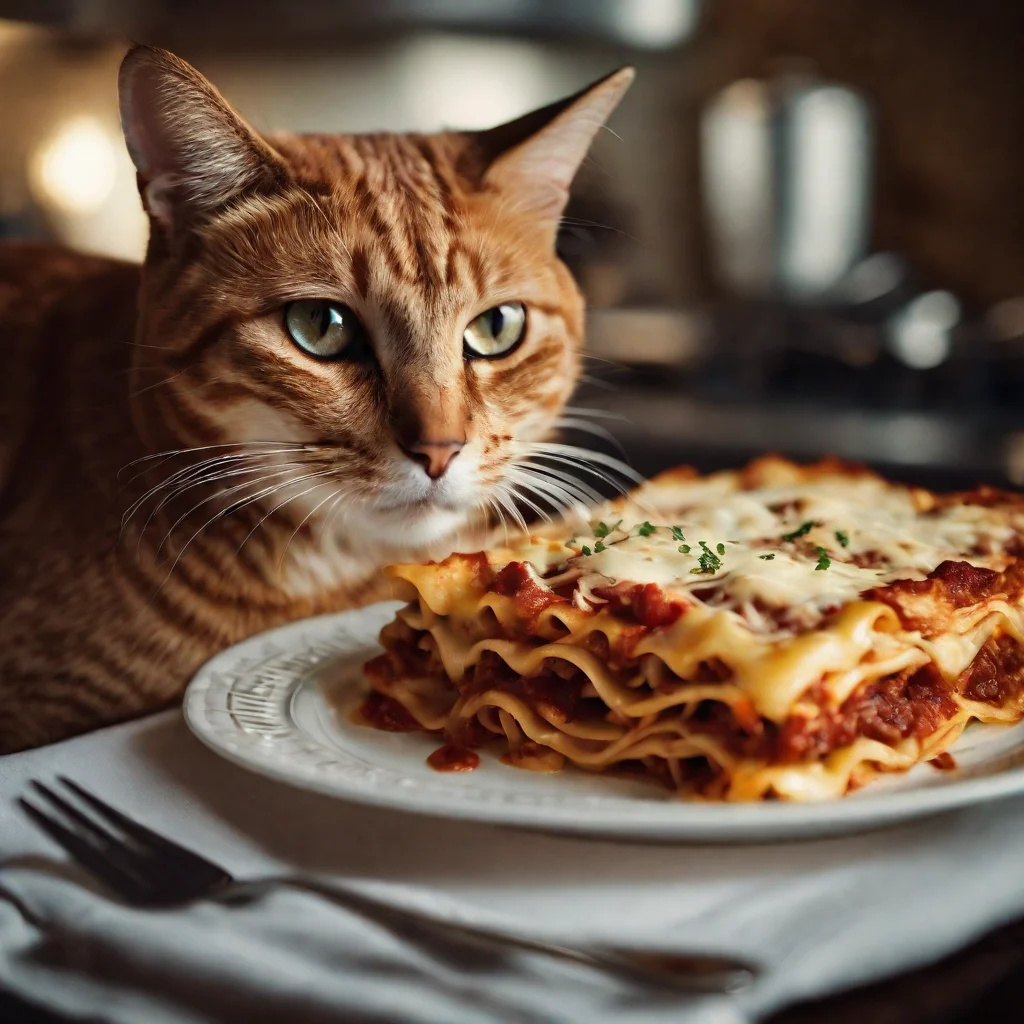
The Vet’s Take: Professional Opinion on Cats and Lasagna
As much as we love hearing personal stories and anecdotes, sometimes it’s important to consult the experts. So, let’s turn to the professionals and hear what veterinarians have to say about cats and lasagna.
When it comes to the question of whether or not cats can eat lasagna, veterinarians are unanimous in their answer: no, cats should not eat lasagna. According to Dr. Sarah Thompson, a veterinarian with years of experience, “Lasagna is not a suitable food for cats. It contains ingredients that can be harmful and even toxic to cats, such as onions, garlic, and high amounts of fat. Feeding your cat lasagna can lead to serious health problems, including anemia, pancreatitis, and kidney issues.”
Dr. Thompson also stresses the importance of providing cats with a balanced and species-appropriate diet. “Cats are obligate carnivores, which means they require a diet that is rich in animal protein. Lasagna does not provide the necessary nutrients for cats and can lead to nutritional imbalances and long-term health issues,” she explains.
Another veterinarian, Dr. James Evans, adds that feeding cats human food, including lasagna, can also create behavioral issues. “Feeding cats human food can reinforce begging behavior and create a dependency on it. It’s important to establish a consistent and appropriate feeding routine for your cat to ensure their overall health and well-being.”
So, what should you feed your cat instead of lasagna? Dr. Thompson recommends high-quality cat food that is specifically formulated to meet a cat’s nutritional needs. These diets are balanced and provide all the necessary nutrients for a cat’s overall health and vitality. Additionally, she advises cat owners to consult with their veterinarian about any dietary concerns or questions they may have.
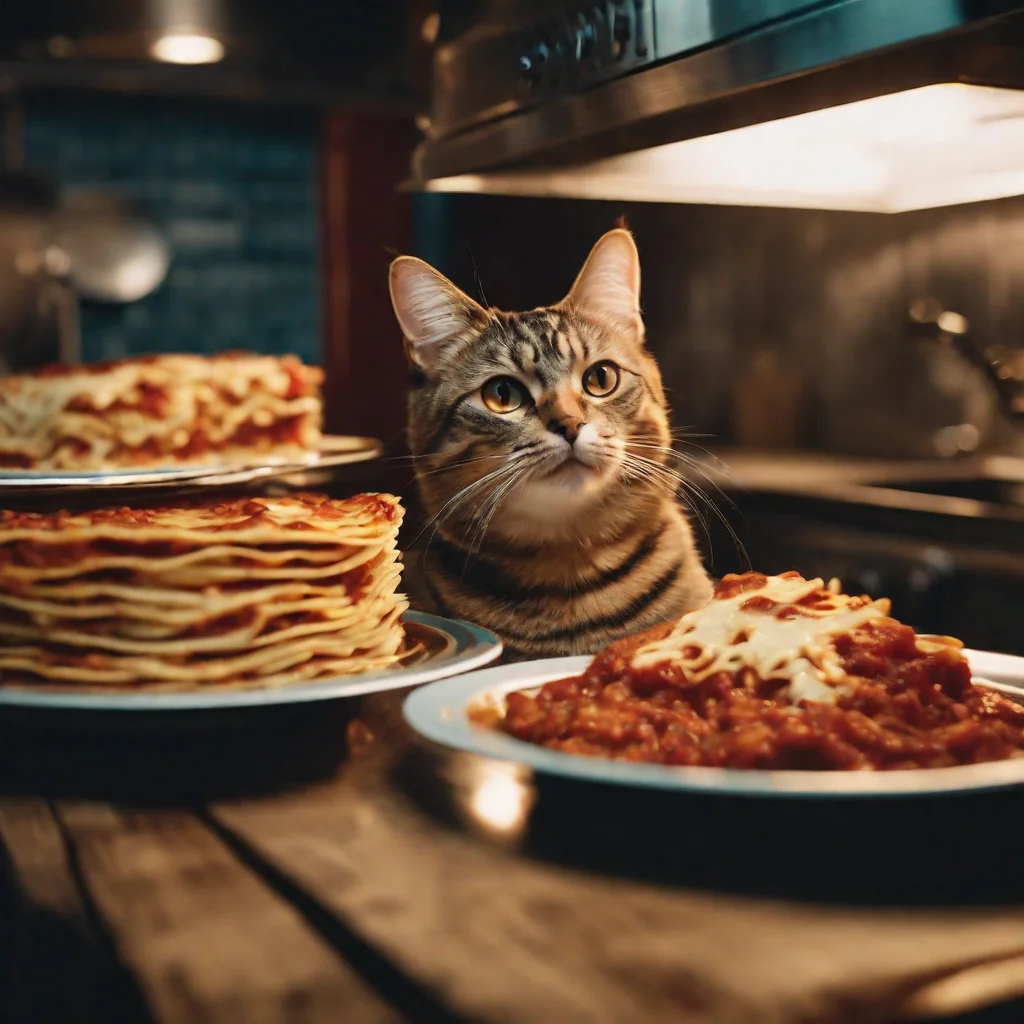
Healthier Alternatives to Feeding Your Cat Human Food
As we’ve learned, lasagna is definitely not a suitable food for cats. But you may be wondering, what can you feed your feline friend instead? Don’t worry, there are plenty of healthier alternatives to feeding your cat human food.
One of the best options is to stick with a high-quality, commercially prepared cat food that is specifically formulated to meet their nutritional needs. These diets are carefully balanced to provide all the necessary nutrients for your cat’s overall health and vitality. Look for brands that list real meat as the first ingredient and avoid those that contain fillers or artificial additives. Remember, cats are obligate carnivores, so their diet should primarily consist of animal protein.
If you’re looking for a more natural option, you can consider feeding your cat a raw or homemade diet. However, it’s important to consult with a veterinarian or feline nutritionist to ensure that the diet is properly balanced and meets your cat’s specific needs. Homemade diets can be tricky to get right, as they require careful attention to include all the necessary nutrients in the correct proportions.
Another option to consider is incorporating some cat-friendly fruits and vegetables into your cat’s diet. Some cats enjoy small portions of cooked pumpkin, sweet potato, or peas as a treat. However, it’s important to introduce these foods gradually and in small amounts, as not all cats tolerate fruits and vegetables well.
In addition to these options, there are also plenty of commercially available cat treats that are specifically formulated for feline dietary needs. These treats can provide a flavorful and nutritious snack for your cat without the risk of harmful ingredients found in human food.
Remember, while it may be tempting to share your meals with your furry friend, it’s important to prioritize their health and well-being. Stick to a balanced and species-appropriate diet, and consult with your veterinarian for any specific dietary concerns or questions you may have. By doing so, you’ll be ensuring that your cat stays healthy, happy, and safe from the dangers of lasagna and other unsuitable human foods.
Conclusion
After diving deep into the topic of whether cats can eat lasagna, it’s clear that this beloved Italian dish is not suitable for our feline friends. Despite the popular portrayal of Garfield devouring platefuls of lasagna, it’s important to remember that he’s just a cartoon character. Real cats should not be fed lasagna, no matter how much they may beg or give you those longing eyes.
Lasagna contains ingredients that can be harmful or even toxic to cats. Onions and garlic, commonly found in lasagna recipes, can cause damage to a cat’s red blood cells and lead to a condition called hemolytic anemia. This can be life-threatening for our beloved pets. Additionally, the high-fat content in lasagna can lead to weight gain, obesity, and even pancreatitis in cats. The high salt content in lasagna can also disrupt their electrolyte balance and lead to kidney problems.
Personal testimonials from cat owners who have experienced their cats eating lasagna have highlighted the risks and negative effects. From gastrointestinal upset to pancreatitis, the consequences can be serious. It’s always better to be safe than sorry when it comes to your cat’s health.
Veterinarians unanimously agree that cats should not eat lasagna. It’s essential to provide them with a balanced and species-appropriate diet. High-quality cat food that is specifically formulated to meet a cat’s nutritional needs is the best option. These diets ensure that cats receive all the necessary nutrients for their overall health and vitality.
If you’re looking for alternatives to human food, consider sticking to commercially prepared cat food, raw or homemade diets (with guidance from a veterinarian), or cat-friendly fruits and vegetables in small portions. There are also plenty of commercially available cat treats that are formulated to meet feline dietary needs.
In conclusion, while lasagna may be a favorite among many humans, it’s not a safe or suitable food for cats. Stick to a balanced and species-appropriate diet to ensure your furry friend stays healthy and happy. And remember, Garfield may love lasagna, but real cats are better off without it.
FAQs:
Q: Is it OK for cats to eat pasta?
A: While plain, cooked pasta is not toxic to cats, it does not provide any significant nutritional benefits for them. Cats are obligate carnivores, and their dietary needs are best met with a balanced diet that includes high-quality animal-based protein. If you want to offer your cat a treat, it’s better to stick to cat-friendly options specifically formulated for their nutritional needs.
Q: What cat likes to eat lasagna?
A: In popular culture, the cartoon character Garfield is famous for his love of lasagna. However, it’s important to note that lasagna is not a suitable or healthy food for cats. While some cats may show interest in the smell or taste of certain ingredients in lasagna, it should not be fed to them due to the potential harm it can cause to their health.
Q: Why does Garfield eat lasagna?
A: In the comic strip and animated series Garfield, the character Garfield is portrayed as having a strong love for lasagna. This trait is part of his exaggerated personality and serves as a comedic element in the stories. It is not based on any real dietary preferences or nutritional needs of cats.
Q: Can a dog eat lasagna?
A: It is generally not recommended to feed dogs lasagna or any other human food that is high in fat, spices, or seasonings. Many ingredients commonly found in lasagna, such as onions and garlic, can be toxic to dogs. Additionally, the high-fat content and rich ingredients in lasagna can lead to digestive upset, pancreatitis, or other health issues in dogs. It’s best to stick to a balanced and appropriate diet specifically formulated for dogs.
Remember, when considering what to feed your pet, it’s important to prioritize their health and provide them with a nutritionally balanced diet that meets their specific dietary needs. If you have any concerns or questions about your cat’s or dog’s diet, it’s always best to consult with a veterinarian for personalized advice.

